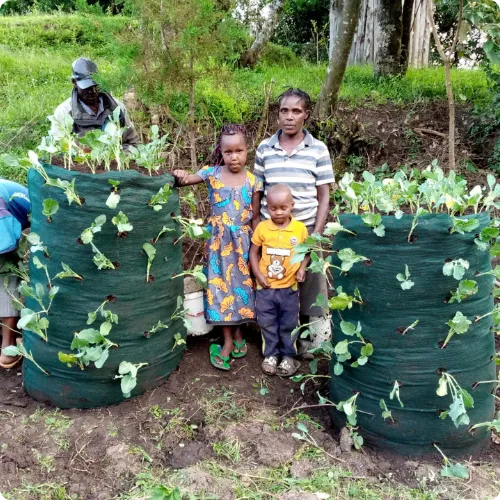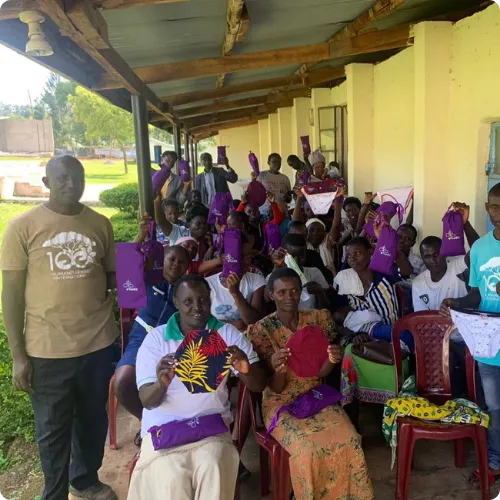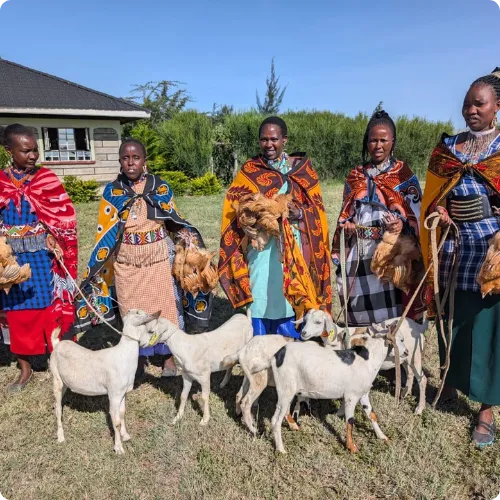CELEBRATING 10 YEARS! 2015 - 2025
Garden Towers
These vertical gardens, which can grow a variety of vegetables in small spaces, enable families to produce nutritious food year-round, even in drought-prone areas.
CELEBRATING 10 YEARS! 2015 - 2025
Garden Towers
These vertical gardens, which can grow a variety of vegetables in small spaces, enable families to produce nutritious food year-round, even in drought-prone areas.
Our impact since 2015:
22000+
Garden Towers Built
12000+
Families Empowered
100+
Jobs Created
Our impact since 2015:
22000+
Garden Towers Built
12000+
Families Empowered
100+
Jobs Created
The Role of Garden Towers in Kenya’s Sustainable Farming
The Role of Garden Towers in Kenya’s Sustainable Farming
The Stages of a Garden Tower
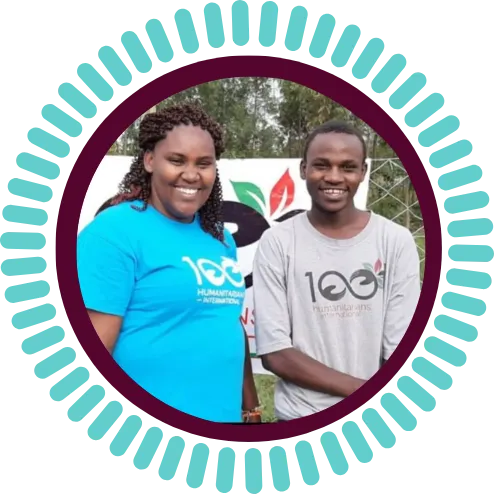
Step One: Identify a Family in Need
A community director for 100 Humanitarians International plays a crucial role in identifying families who are ready to take stewardship of a garden tower. This process involves assessing the family’s willingness to learn, their commitment to maintaining the garden, and their ability to share knowledge with others.
Families who demonstrate responsibility and enthusiasm for sustainable farming are prioritized, as they are more likely to succeed and inspire others in the community. By guiding these families, the community director helps ensure the long-term success of the program, fostering a ripple effect of self-reliance and empowerment.

Step Two: Sewing a Garden Tower
Sewing garden towers is a vital part of 100 Humanitarians International’s sustainable food initiative. Skilled sewers create these durable fabric towers designed to hold soil and plants, providing families with a means to grow their own food. For the sewers, this work offers both a steady job and a source of income, as they are paid for each tower they produce. By participating in this initiative, sewers not only support their own families financially but also play a crucial role in fostering self-reliance and food security for other families in their community.
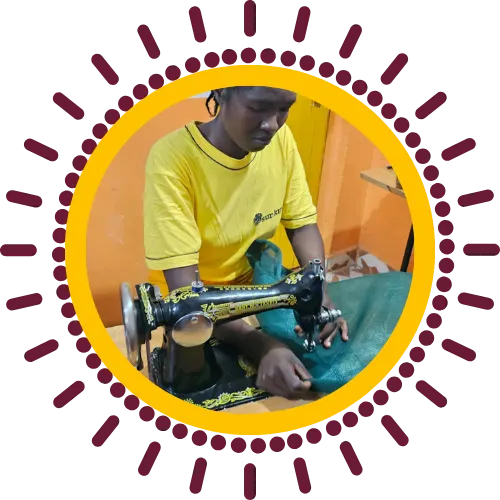
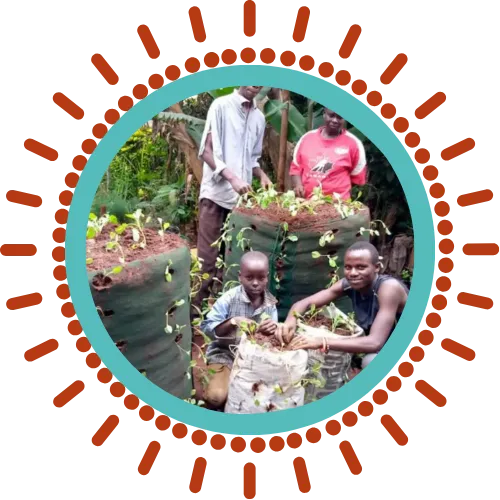
Step Three: Building & Planting a Garden Tower
Building a garden tower begins with a durable fabric structure that is sewn and designed to hold soil securely. The tower is filled with nutrient-rich soil, often layered with organic materials like compost to enhance plant growth. Small planting holes are evenly spaced around the fabric to accommodate various crops. Families then plant seeds or seedlings in each hole, ensuring that each plant has enough space to thrive. As the garden matures, the soil is regularly watered and enriched to maintain fertility. This low-maintenance system can produce a continuous harvest of vegetables and herbs, providing both food and income opportunities for families throughout the year.

Step Four: Harvesting a Garden Tower
Harvesting from a garden tower is a rewarding process that provides families with a continuous supply of fresh produce. As plants grow and mature, families can pick vegetables and herbs directly from the tower’s planting holes.
Crops such as spinach, kale, tomatoes, and onions are often harvested on a rotating basis, ensuring a steady supply of food throughout the year. This method promotes efficient use of space and resources, allowing families to enjoy nutritious meals and even sell surplus produce for additional income, fostering both self-reliance and economic stability.
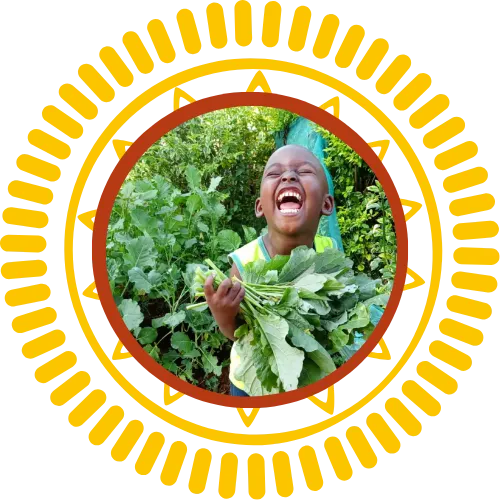

The Stages of a Garden Tower
Step One: Identify a Family in Need

A community director for 100 Humanitarians International plays a crucial role in identifying families who are ready to take stewardship of a garden tower. This process involves assessing the family’s willingness to learn, their commitment to maintaining the garden, and their ability to share knowledge with others.
Families who demonstrate responsibility and enthusiasm for sustainable farming are prioritized, as they are more likely to succeed and inspire others in the community. By guiding these families, the community director helps ensure the long-term success of the program, fostering a ripple effect of self-reliance and empowerment.
Step Two: Sewing a Garden Tower

Sewing garden towers is a vital part of 100 Humanitarians International’s sustainable food initiative. Skilled sewers create these durable fabric towers designed to hold soil and plants, providing families with a means to grow their own food. For the sewers, this work offers both a steady job and a source of income, as they are paid for each tower they produce. By participating in this initiative, sewers not only support their own families financially but also play a crucial role in fostering self-reliance and food security for other families in their community.
Step Three: Building & Planting a Garden Tower

Building a garden tower begins with a durable fabric structure that is sewn and designed to hold soil securely. The tower is filled with nutrient-rich soil, often layered with organic materials like compost to enhance plant growth. Small planting holes are evenly spaced around the fabric to accommodate various crops. Families then plant seeds or seedlings in each hole, ensuring that each plant has enough space to thrive. As the garden matures, the soil is regularly watered and enriched to maintain fertility. This low-maintenance system can produce a continuous harvest of vegetables and herbs, providing both food and income opportunities for families throughout the year.
Step Four: Harvesting a Garden Tower

Harvesting from a garden tower is a rewarding process that provides families with a continuous supply of fresh produce. As plants grow and mature, families can pick vegetables and herbs directly from the tower’s planting holes.
Crops such as spinach, kale, tomatoes, and onions are often harvested on a rotating basis, ensuring a steady supply of food throughout the year. This method promotes efficient use of space and resources, allowing families to enjoy nutritious meals and even sell surplus produce for additional income, fostering both self-reliance and economic stability.


Get Updated with 100 Humanitarians
Each week we send project updates to your inbox, so that you know exactly where your donations go. We also keep you updated on volunteer opportunities and expeditions to Kenya.
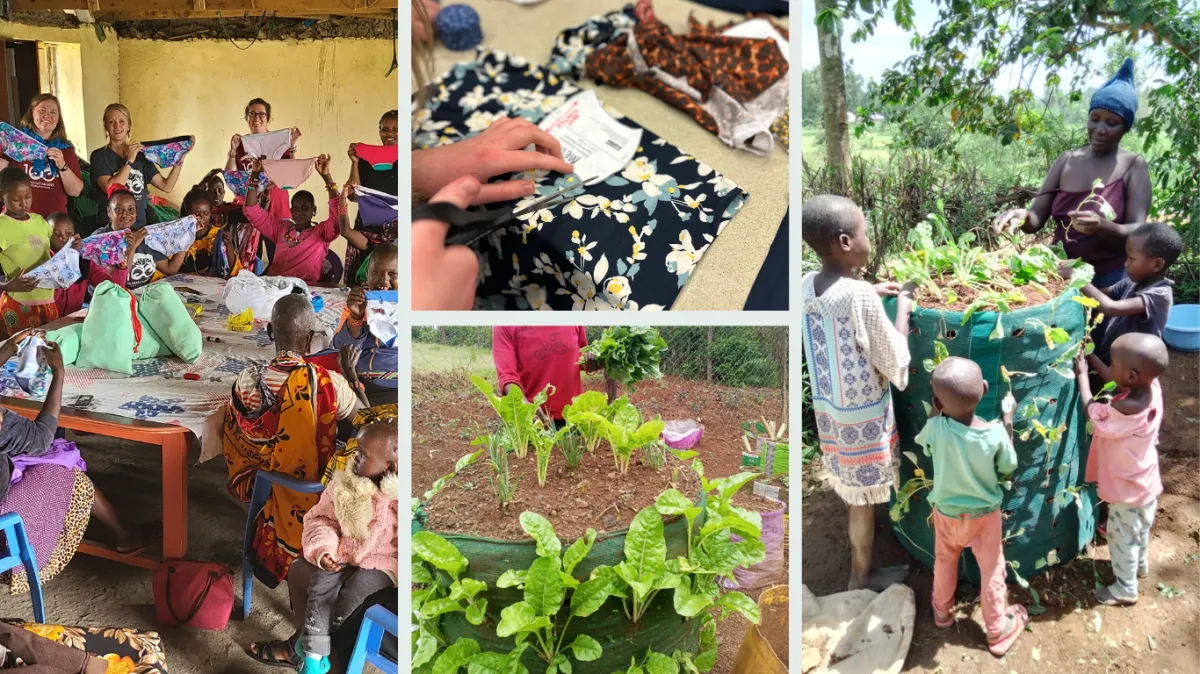
We will not sell your information to anyone, and you
can opt-out at any time.
100 Humanitarians International is a 501(c)(3) nonprofit recognized by the IRS, and all donations to 100 Humanitarians International are tax-deductible in accordance with IRS regulations.
EIN #82-1048388
South Jordan, Utah
801-432-0105
Cryptocurrency donations are accepted using Every.org, a 501(c)(3) nonprofit who processes and sells the cryptocurrency, sends the tax receipt, and disburses the full realized gain to 100 Humanitarians International.
More information here.

Get Updated with 100 Humanitarians
Each week we send project updates to your inbox so that you know exactly where your donations go. We also keep you updated on volunteer opportunities and expeditions to Kenya.

We will not sell your information to anyone, and you can opt-out at any time.
100 Humanitarians International is a 501(c)(3) nonprofit recognized by the IRS, and all donations to 100 Humanitarians International are tax-deductible in accordance with IRS regulations.
EIN #82-1048388
South Jordan, Utah
801-432-0105
Cryptocurrency donations are accepted using Every.org, a 501(c)(3) nonprofit who processes and sells the cryptocurrency, sends the tax receipt, and disburses the full realized gain to 100 Humanitarians International.
More information here.
Social Media












